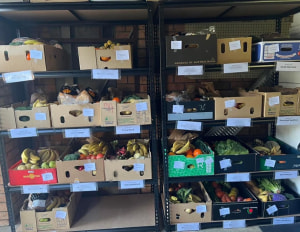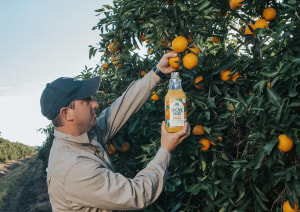Woolworths has outlined more changes towards a more sustainable business, revealing a significant drop in emissions, around 360,000 tonnes of waste diverted from landfill and 22 million meals donated to Australians in need.
According to the Woolworths Group’s annual sustainability report, a momentum on multiple fronts was achieved during FY21 to reduce its carbon emissions and tackle environmental issues within its supply chain.
Major achievements were cutting 97,000 tonnes of CO2 equivalent from its operations; increasing its solar network to 100,000 panels to 31,480-kilowatt capacity; and reducing single use plastic by 500 million pieces by implementing paper and sugar cane alternatives.
Woolworths Group CEO Brad Banducci said the initiative to reduce its carbon footprint will help global efforts to mitigate effects of climate change but acknowledged that the company still has more to do.
In June, the group appointed Alex Holt to the new role of chief sustainability officer, and confirmed its dedication to sustainability and driving concerted action across each of its brands and businesses, as it works towards its ambitious targets for 2025.
Better products, better packaging
The Group has set four goals in regards to its products:
1. Healthier choices for customers
Woolworths has been increasing its range of health products at an affordable price to consumers. By 2025, the company will only use characters, graphics or activities on its own brand products that will be perceived as primarily appealing to children on healthier product packaging.
2. 100 per cent of own brand packaging is sustainable
The company is transitioning its own brand range packaging to be 100 per cent recyclable, reusable or compostable by 2023. In FY22, Woolworths will run a 13-week trial replacing 100 per cent of rigid and flexible plastic used to wrap its 1kg bag of apples and implement FSC-certified fibre board.
It has also launched an initiative to tackle plastic waste in its store in Victoria and Queensland where consumers can refill their own bottles. The system allows consumers to refill their own bottles from the Macro Whole Living Range, which includes laundry liquid, multipurpose surface cleaner, and dishwashing liquid.
3. 100 per cent of own brand sourcing is sustainable
Woolworths own brand products plan to make it easier for its customers to make ethical choices in what they purchase through ensuring all commodities are sourced sustainably through suppliers that have a low risk of negative social and environmental impacts.
4. Leading the future of protein
The company also hopes to be at the forefront of promoting and providing a wide range of protein sources that will have a positive impact on the environment. In terms of animal protein sources, it has continued to work with farmers and partners to promote good animal welfare management in the supply chain in line with consumer demand for sustainable meat.
Throughout FY22, Woolworths has said it will primarily establish volumes of soy in livestock, improving the reporting capabilities for soy derivatives and advocating for the increase in availability of low-risk soy to support the supply chain.
Holt said the group plans to reveal its full approach to lead the future of protein in 2022.
Changes for the planet
Woolworths has set the goal to become a net carbon positive business by 2050 – taking more carbon from the atmosphere than it produces.
Woolworths said 63 per cent of its Scope 1 and 2 greenhouse gas emissions will be reduced by 2030. The Group has made significant progress towards this goal, having emitted 27 per cent less Scope 1 and 2 emissions from its 2015 baseline.
Being the first Australian retailer to have its climate goals validated by the global Science Based Targets Initiative (SBTI), Woolworths’ climate strategy has set in motion developments for reaching 100 per cent green electricity and zero food waste to landfill by 2025.
Woolworths’ 100 per cent renewable electricity plan is still in its earlier stages but has made significant steps towards reaching full ‘green’ status. In June, the company made its first power purchase agreement (PPA) with CWP renewables to build a wind farm in NSW.
Woolworths' wind farm in partnership with CWP renewables

with CWP renewables.
By 2022, the wind farm will offset almost 158,000 tonnes of carbon emissions annually and cover approximately 30 per cent of Woolworths Group’s energy consumption in NSW.
“This has been a foundational year. We’re setting our teams up to ensure sustainability is core to what we do - from stores to distribution centres, support offices and supply chains,” said Holt.
Woolworths Group is also planning to initiate a review with farmers, suppliers and partners to recognise opportunities where it can adopt sustainable and regenerative agricultural practices across its fresh food supply chain in high‐risk areas.
“Our sustainability journey is underway, and I hope you will join us in creating a better tomorrow for generations to come,” said Holt.






